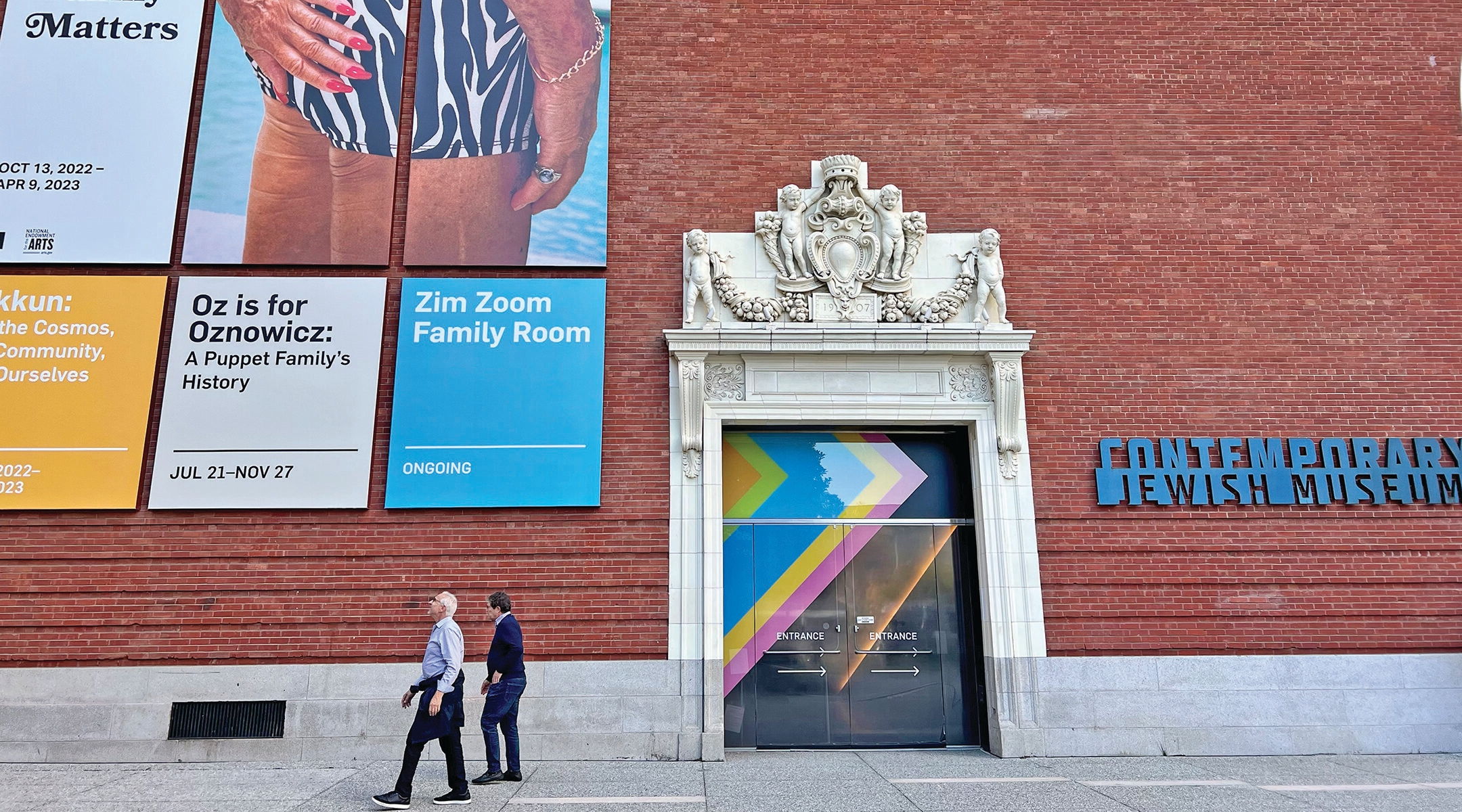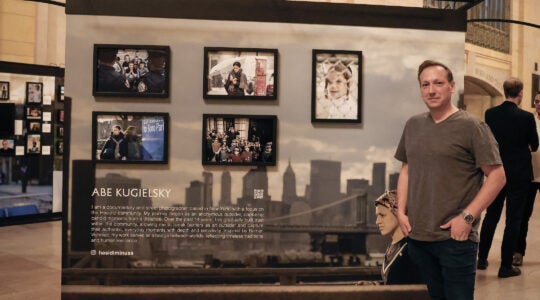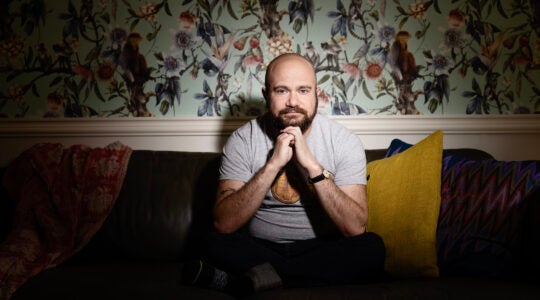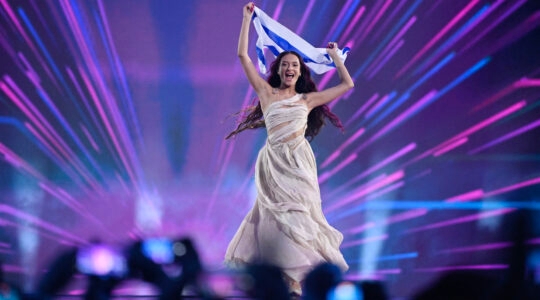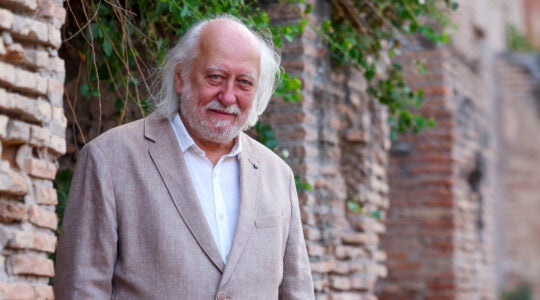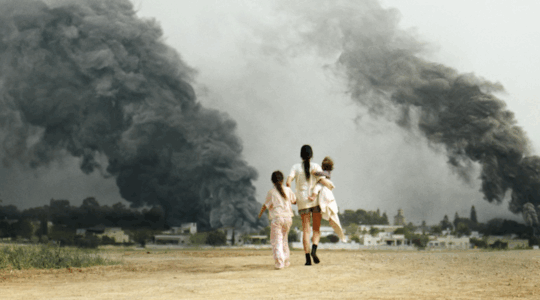(J. The Jewish News of Northern California via JTA) — When the inaugural California Jewish Open exhibit opens at the Contemporary Jewish Museum in San Francisco in June, the gallery walls will have several blank spaces where works of art were supposed to hang.
The spaces will represent the “missing perspectives” of seven self-identified Jewish anti-Zionist artists who withdrew their pieces in a coordinated protest after museum officials said they would not meet several of the artists’ demands.
The artists, who are part of a group calling themselves California Jewish Artists for Palestine, had requested, among other things, that the museum divulge the names of its funders and divest from all funding sources associated with Israel. They also expressed concern about their art appearing alongside works that reflected different ideas about Israel from their own.
“The absence of the artworks — and the missing perspectives that these empty spaces reflect — sincerely aims to hold space for critical thinking at this fraught time, and in doing so, space for the community at large,” the museum said in a statement issued Thursday. “At a time when many need connection more than ever, the blank walls speak to a moment when connection may also feel insufficient or impossible.”
The incident is the latest dustup spurred by the Israel-Hamas war to play out in a Bay Area museum. Last month the Jewish interim CEO of the Yerba Buena Center for the Arts, also in San Francisco, resigned after a series of protests by pro-Palestinian artists on exhibit at the museum, which the CEO characterized as antisemitic, brought operations to a standstill. But this is the first time in recent memory that artists have withdrawn their work en masse from an exhibit at the Contemporary Jewish Museum, according to interim executive director Kerry King, who has worked at CJM in different roles for eight years.
“I’m really proud of us remaining open and available for conversations,” she said in an interview on Friday. “There’s a sense of loss and disappointment that we won’t have this opportunity for those walls to be filled, but I think it’s really powerful and important that the artists are acknowledged.”
In a statement posted Friday on Instagram, the artists said they responded to the museum’s open call for works “to make visible the existence of anti-zionist Jewish artists in California.” They anticipated that curators would reject their pieces, which included explicitly pro-Palestinian messages such as “Free Palestine.” Several of the artists openly identified as anti-Zionists in their statements. They were surprised when guest curator Elissa Strauss accepted pieces by seven of the artists in the collective.
On March 22, senior curator Heidi Rabben sent an email to all 54 of the accepted artists alerting them to the fact that the exhibit would include politically charged pieces, some of them critical of Israel’s military campaign in Gaza, and requesting that they consent to having their pieces “presented in proximity to artwork(s) by other Jewish artists which may convey views and beliefs that conflict with [their] own.”
Rabben had conversations with around 20 artists who had questions or concerns after receiving the email. Only one of the CJAP artists spoke with Rabben before the group shared its demands by email.
In addition to demanding that CJM divest from pro-Israel funders, the artists sought extraordinary control over their artwork. They requested that the museum amend the terms they agreed to by giving them the ability to modify or withdraw their works from the exhibit at any time, and to have autonomy over wall texts, artists statements and other framing. (In their Instagram statement, the artists wrote that they were concerned about “potential curatorial both ‘sides-ism’” and about the possibility that their pieces would appear next to ones that “grieve Jewish deaths without acknowledging the genocide of Palestinians.”)
In an email response to the CJAP artists that was shared with J., King wrote that the museum could not meet those demands.
“We are a museum focused on art, culture, and education, and we often serve students as young as the kindergarten level,” she wrote. “It is our responsibility to frame all the works in our museum, particularly those that present more challenging or elevated ideas, in a way that adheres to our mission and visitors’ needs.”
She noted that CJM has displayed artwork that has been supportive of the Palestinian cause or critical of Israel in the past, and would continue to do so. “However, what we cannot do is question the right of Israel to exist at all, implicitly or explicitly,” she wrote. She also disputed the artists’ claim that their work was being censored.
Requests for comment sent by email to most of the CJAP artists on Friday did not immediately receive responses.
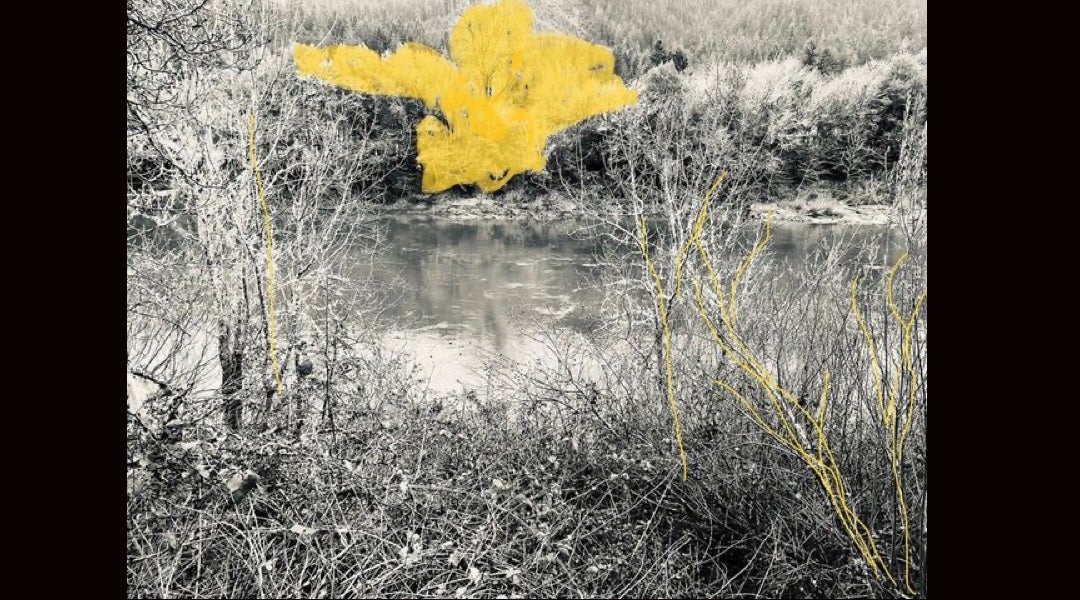
“Horas Transparentes,” by the artist Georgina Reskala, is one of the art pieces scheduled to be on display during the Contemporary Jewish Museum’s California Jewish Open exhibit in summer 2024. (Courtesy of the artist)
In her own statement, one of the artists, Kate Laster, wrote: “As Jews, we refuse to allow any justification, any weaponization of our generational trauma, or to give our consent to normalize apartheid. There is power in refusal — it’s a form of honoring rebellion and imagining what cultural arts ecosystems could be like beyond zionism.”
The other artists who signed the statement are Micah Bazant, Liat Berdugo, Jules Cowan, Rebekah Erev, Rebecca Maria Goldschmidt, Steph Kudisch, Ava Sayaka Rosen, Sophia Sobko, Arielle Tonkin and Irina Zadov. (Not all of them had work that was accepted into the show. Berdugo withdrew her piece independently of the collective.) They said they plan to stage their own exhibit of artwork by anti-Zionist Jews living around the world.
California Jewish Open, the first of its kind at CJM, has been in the works for more than a year. Strauss was approached to serve as guest curator for the exhibit, which asked applicants how they are “looking to the many aspects of Jewish culture, identity, and community to foster, reimagine, hold, or discover connection.” She selected the pieces in a variety of media, out of more than 500 submissions, and chose their thematic groupings, while Rabben communicated with the artists and coordinated logistics.
“We see this exhibit as a chance to reflect what’s on the minds of artists today,” said Strauss, who serves as the artistic director of LABA Bay. “There’s a lot of support for Palestinian human rights among artists, as there is among those of us working on this show, and we weren’t going to ignore that.”
The pieces most critical of Israel were withdrawn, she said, but there are other pieces that engage with the Israeli-Palestinian conflict.
“When we talk about connection, we have this sense that it’s a sweet, kumbaya thing, but connection is fraught,” she said. “All of the pieces in this show have something to teach us about ourselves as individuals and a community right now.”
It was Rabben’s idea to leave empty spaces on the walls representing the withdrawn pieces, Strauss said. The missing artwork will not be described, and the artists will not be named.
“It is an upsetting and painful time in the world, and I don’t think anyone can or should ignore that, especially not the Jewish community,” Rabben said. “We want to leave space for the discomfort.”
Not all artists who consider themselves anti-Zionists pulled out of the show. Lisa Kokin, who lives in El Sobrante and has had work shown in at least 10 previous CJM exhibits, decided to participate because, she said, “I want to be part of a dialogue.”
“I’m OK showing my work in a show with people whose opinions I don’t agree with, because if there’s no dialogue, there’s never going to be any resolution of anything,” said Kokin, who has identified as anti-Zionist since she was a teenager. Her “Red Line” is a stitched piece that she worked on “while thinking about what’s happening in Gaza right now.”
She called CJM staff “brave” for hosting an exhibit of work by Jewish artists during a time of heightened emotions stoked by the Israel-Hamas war, and for deciding to acknowledge the artists who withdrew their work.
“I think it’s the role of a museum and art space to bring up these types of things when they’re happening, and it’s risky in so many ways, and so I just commend them for doing this,” she said.
Amy Trachtenberg, a San Francisco artist who also considers herself to be anti-Zionist, said she was very disappointed that pro-Palestinian artists bowed out of the exhibit.
“I don’t know who those artists are, but I’m sure there were some very important voices among them,” she said. “I don’t know what is furthered by absenting themselves from the dialogue.”
After the CJM accepted her piece, she said she requested a meeting with Rabben to ensure that the exhibit would include a wide range of perspectives about Israel, and that the museum would organize programming around the show. She said she came away from the conversation reassured.
“I don’t know if it’s naive for a Jewish institution to try to pull this off right now,” she said. “I’m very aware of what happened at Yerba Buena, and I think that there needs to be a space for those voices. To be fair, CJM tried to provide that.”
Artist Holly Wong of San Francisco said she respects the decision of the CJAP artists to “act according to their conscience” and withdraw their pieces. She, too, opposes the Israeli government and mourns the loss of innocent Palestinian lives. However, she chose not to withdraw her fiber installation, “Lost Language II,” which was inspired by the Dead Sea Scrolls. She created the piece in 2018 to honor her mother, who died in 1987.
“I cannot withdraw this work from an institution that has lovingly welcomed it and by proxy, my mother’s memory,” she said. “I hope the exhibition will be a chance to continue dialogue. It is also important that people understand that Jewish people are not a monolith, and we see this conflict through many different lenses.”
A version of this piece originally ran in J. The Jewish News of Northern California and is reprinted with permission.
JTA has documented Jewish history in real-time for over a century. Keep our journalism strong by joining us in supporting independent, award-winning reporting.
